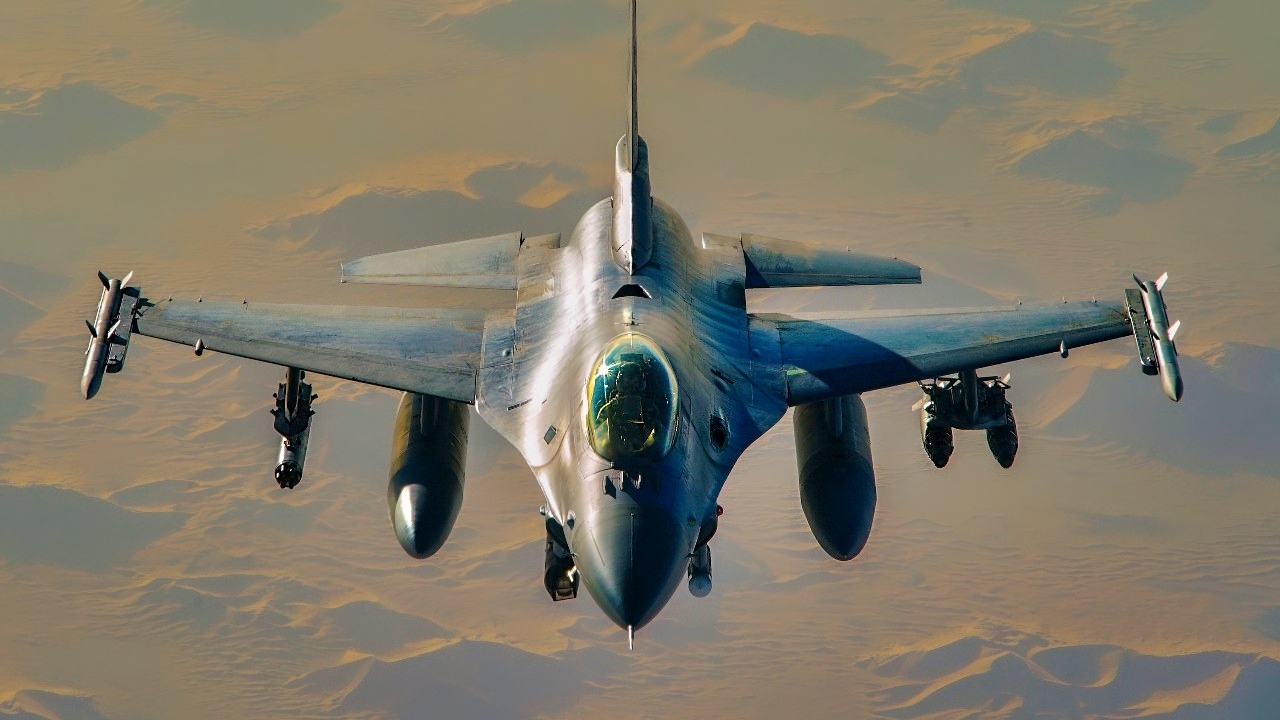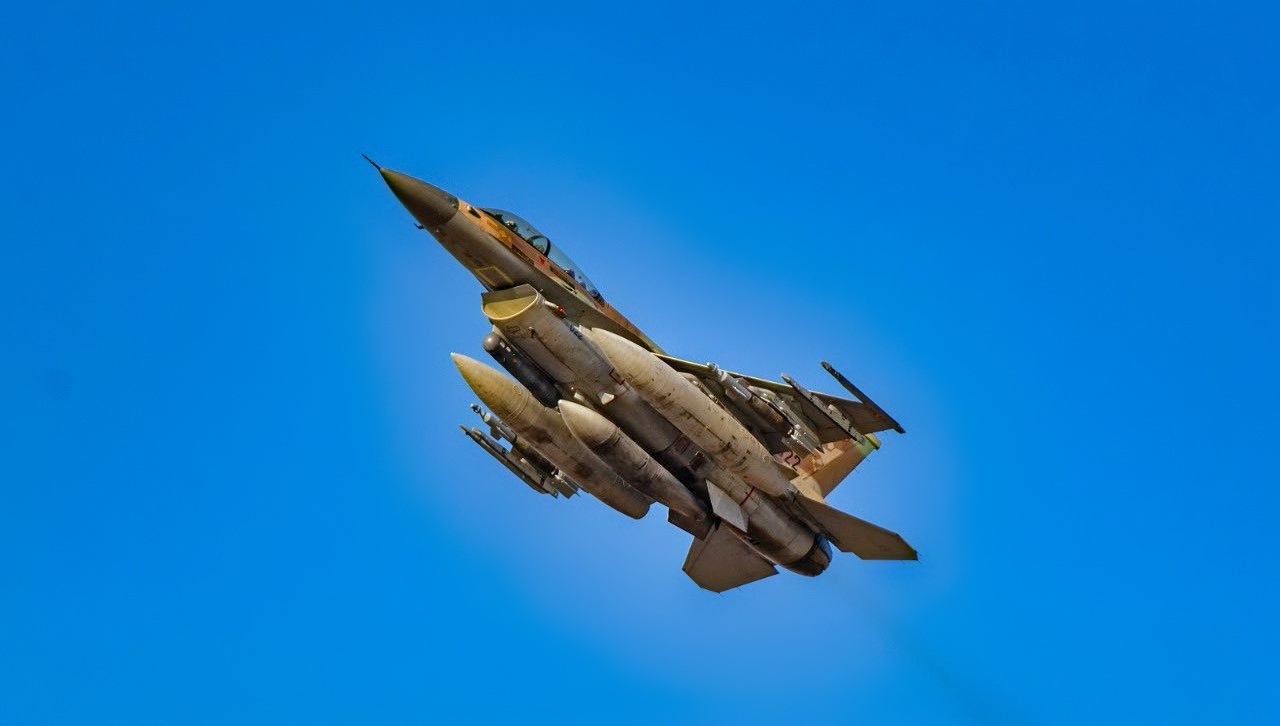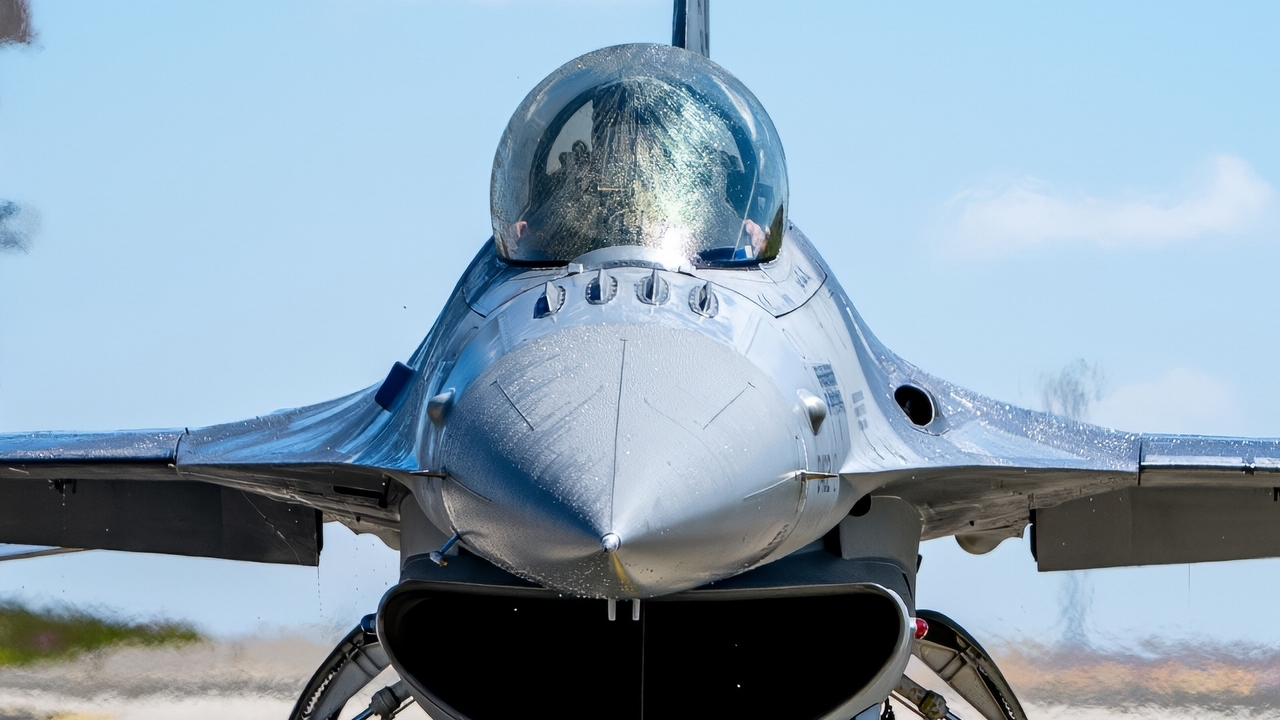Key Points and Summary – The “Package Q” air raid over Baghdad in 1991, the largest F-16 mission in history, serves as a critical lesson for future air wars.
-During the raid, 72 F-16s flew into one of the world’s most heavily defended cities, with one pilot, Emmett “Stroke 3” Tullia, famously evading six SAMs.

A Polish F-16 pilot awaits instructions from his crew chief after completion of a Baltic Air Policing sortie at Šiauliai Air Base, Lithuania, Aug. 30, 2017. The Polish air force recently relinquished control of the NATO Baltic Air Policing mission to the U.S. Air Force for the forty-fifth rotation of allied protection of the sovereign skies of the Baltic region since Baltic Air Policing operations began in 2004. (U.S. Air Force photo/ Tech. Sgt. Matthew Plew)
-The near-disaster demonstrated that even a dominant air force faces extreme risk against integrated air defenses.
-This lesson is more relevant than ever today, as pilots now face a far deadlier A2/AD environment composed of AI-driven drone swarms, hypersonic weapons, and long-range missiles like China’s PL-15, which are designed to overwhelm modern defenses.
What Desert Storm Could Tell Us About Future Air Wars
On 19 January 1991, a formation of 72 F-16 Fighting Falcon combat jets hurtled towards targets in Baghdad, entering one of the most heavily defended airspaces in modern history.
Although the broader Gulf War is often recalled as an almost textbook example of air superiority, the mission revealed a stark truth: even a dominant air force will eventually confront lethal risks.
That’s especially true when penetrating well-integrated surface-to-air missile (SAM) belts.
One pilot, Emmett Tullia (callsign “Stroke 3”), famously evaded six incoming SAMs in his F-16.
Today, as Washington contemplates what might happen in the South China Sea and Taiwan in the coming years, the lessons of that legendary raid are perhaps more relevant than ever: the technological and operational challenges that almost lost the U.S. those pilots prove even more acute when one considers the lethality of next-generation anti-access/area-denial (A2/AD) networks.

F-16 Fighting Falcons assigned to the 114th Fighter Wing sit ready on the ramp while conducting an elephant walk at Joe Foss Field, South Dakota, July 2, 2025. The 114th Fighter Wing conducted an elephant walk to demonstrate its ability to project fighter airpower. (U.S. Air National Guard photo by Master Sgt. Luke Olson)
Lessons from Baghdad
The January 1991 strike, known as “Package Q,” is the largest mass F-16 mission in U.S. Air Force history.
The central strike group consisted of 72 F-16s (56 from the 388th Tactical Fighter Wing, 16 from the 401st), each of which was loaded with twin 2,000lb bombs and supported by eight F-15s for air cover, eight F-4G Wild Weasels for suppression of enemy air defenses (SEAD), and two EF-11 Ravens for electronic warfare.
Their target?
The heart of Saddam Hussein’s regime and key facilities in Baghdad, including the Tawalitha nuclear complex.
From the outside, the operation was under severe stress: tanker refueling in bad weather was difficult, crews would be fatigued, and overlapping basing across four locations all converged to severely complicate what was supposed to be a clear example of U.S. air dominance.
Meanwhile, Iraq’s air defense network was nothing to be scoffed at. In fact, it was formidable: it boasted thousands of SAMs, including SA-2, SA-3, SA-6 systems and dense anti-aircraft-artillery (AAA) coverage around Baghdad. It was so good, in fact, that the city was described as more heavily defended than Hanoi at its peak.
As footage from Tullia’s cockpit has shown, the sky over Baghdad was crisscrossed with missile trails. At one point, he can be heard shouting “Stroke 3 defending 6!” as a Soviet-made SA-6 missile flew straight past his F-16. His flare and chaff – devices designed to distract enemy missiles – failed to work, and yet he somehow managed to get away.
The lessons from this historic incident have been discussed at length by now, but it’s clear that among the lessons is the fact that winning control of the skies isn’t only about having the best jets or the biggest fleet.
The truth is, success largely depends on how well pilots respond when things go wrong.

A U.S. Air Force F-16 Fighting Falcon based in the Central Command area of operations conducts armed aerial patrols in Somalia in support of Operation Octave Quartz, Jan. 9, 2020. The F-16s support to OOQ demonstrates the U.S. military’s reach and power projection across vast distances to hold adversaries such as al-Shabaab at risk with flexible, precise and lethal force that is capable of rapidly responding anywhere on the globe. The mission of OOQ is to reposition U.S. Department of Defense personnel from Somalia to other locations in East Africa. (U.S. Air Force photo by Staff Sgt. Taylor Harrison)
During Desert Storm, success came from their skill and nerve as much as from American technology and the number of aircraft and weapons available to them at the time.
Even against an opponent that was outmatched, flying into a heavily defended city like Baghdad was never going to be easy – and the mission is a reminder that no air force will ever be completely safe once it enters the range of enemy missiles.
The New Threats to American Air Power
Three decades after Baghdad, America’s fighter pilots face a radically different threat environment. While 1991’s pilots faced threats from radar-guided missiles and dense AAA batteries, the next war will add artificial intelligence and hypersonic precision attacks to the mix.
These two technologies are just two of several new threats that are especially dangerous, with autonomous combat drones and next-generation missile systems making the next Desert Storm-like operation perhaps even more dangerous.
Autonomous drones, for example, are no longer experimental. They are genuine. China’s Feihong FH-97A, unveiled in 2023, is an AI-enabled “loyal wingman” platform designed to fly alongside manned aircraft, perform electronic attacks, and even launch its own weapons independently.
Reports from Chinese media suggest that Beijing is also fielding smaller drone swarms capable of reconnaissance, jamming, and kamikaze strikes that can easily overwhelm traditional defenses.
Then there are the missiles. China’s PL-15 long-range air-to-air missile, reportedly capable of Mach 5+ speeds and a 400 km range, was explicitly designed to keep American tankers and AWACS aircraft far away.

F-16I from Israeli Air Force. Image Credit: Creative Commons.
Combined with land-based systems, including the DF-21D anti-ship missile, these weapons now form the backbone of Beijing’s anti-access/area-denial network. These missiles could well destroy U.S. airfields in Japan or Guam, grounding sorties before they even begin.
Baghdad’s defenses were once formidable, but the threat environment today is far worse – and tomorrow’s AI-directed swarms and hypersonic missiles could make pilots feel obsolete. And they probably eventually will be.
About the Author:
Jack Buckby is a British author, counter-extremism researcher, and journalist based in New York. Reporting on the U.K., Europe, and the U.S., he works to analyze and understand left-wing and right-wing radicalization, and reports on Western governments’ approaches to the pressing issues of today. His books and research papers explore these themes and propose pragmatic solutions to our increasingly polarized society. His latest book is The Truth Teller: RFK Jr. and the Case for a Post-Partisan Presidency.
More Military
Forget the F-35 of F-47: A 7th Generation Fighter Is Possible
$500 Drones are Destroying $10,000,000 NATO Tanks in Ukraine War
The Mach 2.2 F-4 Phantom II Fighter Has a Message for Every Air Force on Earth
China’s White Emperor ‘NGAD’ Stealth Fighter Summed Up in 2 Words










